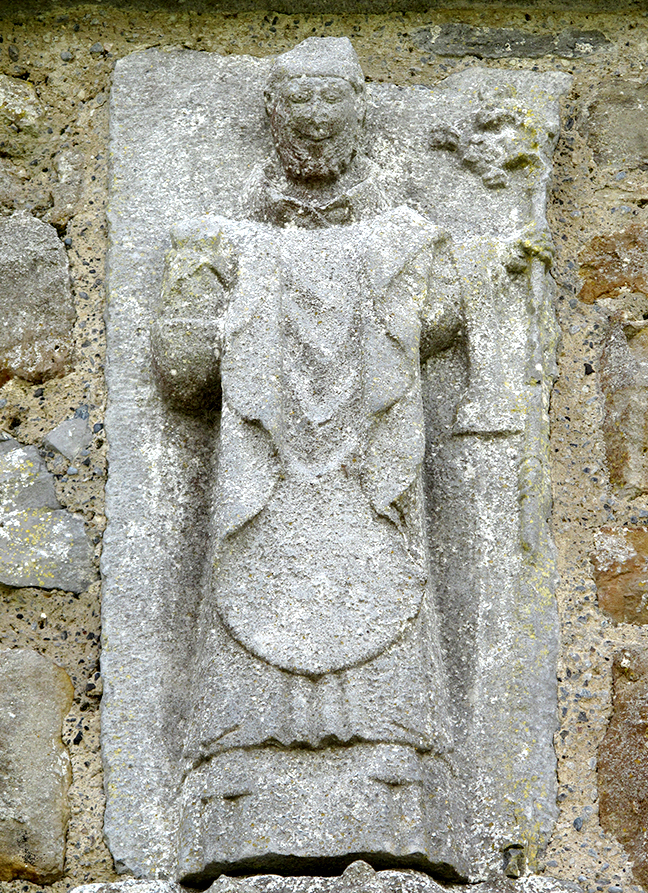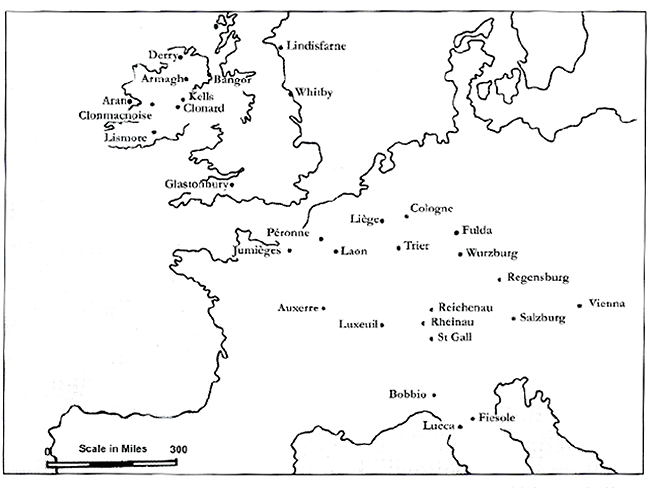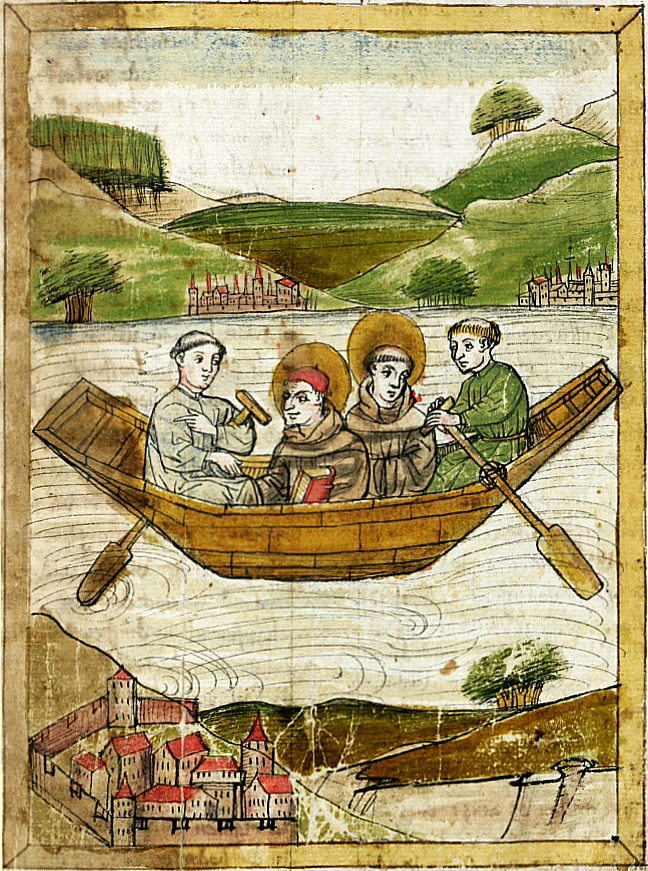Home / History / Irish History / The Book of Kells: Exploring an Irish Medieval Masterpiece / Blending influences from afar
This article is from the free online
The Book of Kells: Exploring an Irish Medieval Masterpiece


Reach your personal and professional goals
Unlock access to hundreds of expert online courses and degrees from top universities and educators to gain accredited qualifications and professional CV-building certificates.
Join over 18 million learners to launch, switch or build upon your career, all at your own pace, across a wide range of topic areas.

 Fig 1. St Patrick. Clonmacnoise cathedral, Co. Offaly, c. 1460 Photo: Rachel Moss.
Fig 1. St Patrick. Clonmacnoise cathedral, Co. Offaly, c. 1460 Photo: Rachel Moss.
 Fig 2. Map of Irish monastic foundations in Europe. © Liam de Paor.
Fig 2. Map of Irish monastic foundations in Europe. © Liam de Paor. Fig 3. St Columbanus and St Gall on Lake Constance. St. Gallen, Stiftsbibliothek, Cod. Sang. 602, p. 33.
Fig 3. St Columbanus and St Gall on Lake Constance. St. Gallen, Stiftsbibliothek, Cod. Sang. 602, p. 33. 





